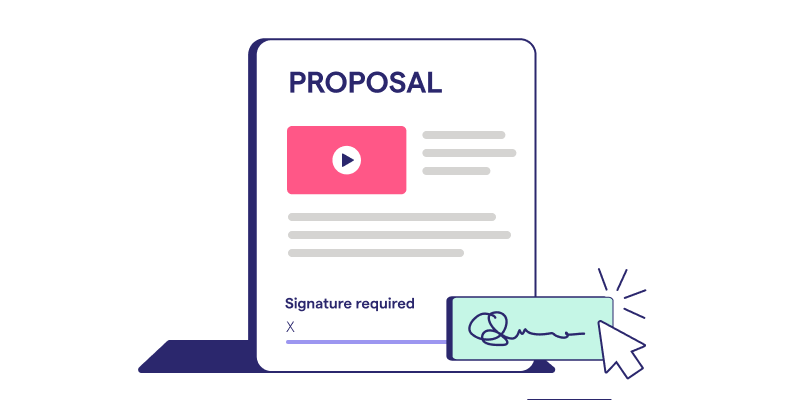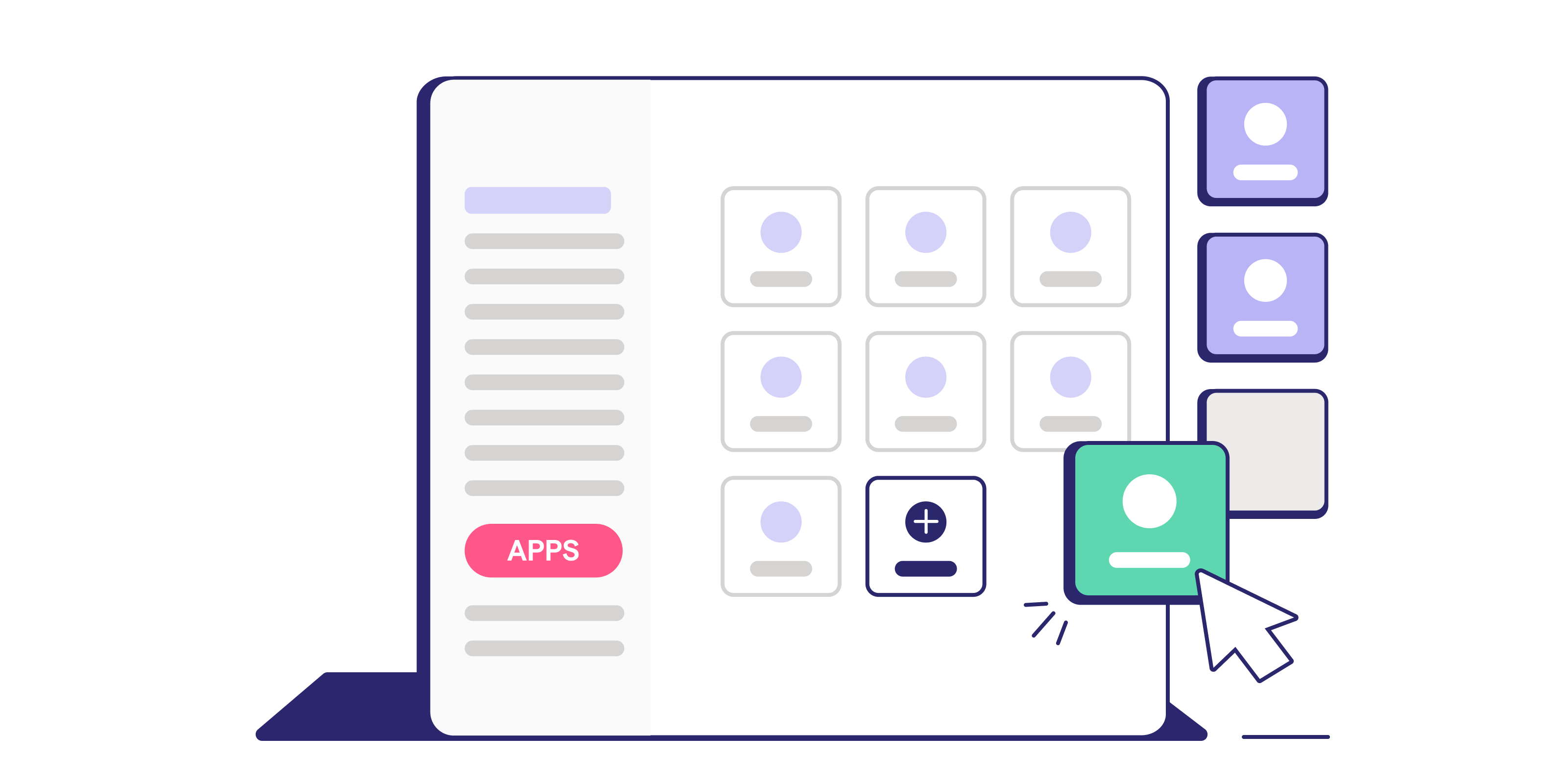10 best proposal automation tools for agencies: Which one fits your agency?

Imagine spending 15 hours or more per week drafting proposals and chasing signatures. That’s time taken away from your agency’s ability to focus on strategy and revenue-generating activities.
Every delay in sending a proposal slows down client decisions and pushes payments further out, creating a backlog that stifles growth.
Proposal automation changes everything about client acquisition. Your agency can get faster responses and reduce human errors, consistently delivering polished proposals and getting paid faster.
Below, we’ll explore key features to look for in proposal automation software and compare several solutions. We’ll also provide some guidance on how to choose the right one for your agency.
Key takeaways:
- Manual proposals waste hours each week, delaying approvals and slowing payments.
- Proposal automation boosts efficiency and reduces errors, while keeping documents polished and consistent.
- Key features to look for include collaboration tools, content management, e-signatures, integrations, and analytics.
- Not all platforms are equal. Ignition stands out with combined proposals, billing, and renewals in one end-to-end solution.
- AI, integrated payments, scope control, and all-in-one workflows are key trends that help agencies optimize their revenue.
The essential role of proposal automation software
Proposal automation software takes the pain out of creating proposals, helping teams build, send, and track them all in one place. It comes with ready-to-use templates and updated pricing tables, along with built-in tracking and e-signatures—features that basic document tools don’t offer.
Going without automation means your agency might waste hours rewriting the same content, leading to productivity drain and a higher chance of errors. You might also miss out on upsell opportunities this way.
Automating keeps everything organized and accurate while supporting business growth.
Key features agencies should look for
Your agency needs to know what really matters, so you don’t spend money on features you’ll never use. The right tool, equipped with the right features, should streamline the proposal process without adding extra complexity.
Collaboration and content management
Having proposal content scattered across folders and emails makes the process inconsistent and slower than it needs to be. Centralizing messaging, assets, and other elements ensures that every proposal looks professional and on-brand, no matter who creates it.
Collaboration tools make teamwork smoother, allowing real-time editing, version control, and role-based permissions. Everyone can work from the same document without worrying about overwriting changes or using outdated details.
E-signature and payment collection

Nothing slows momentum like waiting for a client to print, scan, and sign a proposal. Integrated e-signatures let clients approve instantly, keeping deals moving forward without a lot of back-and-forth.
With an advanced proposal solution like Ignition, you can even collect deposits or set up recurring payments at the moment of acceptance. The platform's seamless solution leads to faster cash flow, helping you secure client commitments and allowing projects to start sooner.
CRM and project tool integrations
Manually copying client details from one system to another is a painstaking and time-consuming process that often leads to mistakes. Proposal software that integrates with your customer relationship management (CRM), project management, accounting, and communication tools automatically syncs everything.
These connections save time and give everyone a clear view of where the deal stands. They also reduce errors, because there’s no risk of double data entry or incomplete data.
Analytics and engagement tracking
Ever wonder if clients read your proposals or just skim and move on? Analytics and engagement tracking provide this info, letting you see which sections get attention, how much time clients spend on them, and where drop-offs occur.
With these insights, you can refine your proposals to highlight what matters most and plan smarter follow-ups. Rather than guessing, you know what’s resonating with clients, so you can stay one step ahead and boost your chances of closing the deal.
Automation of repetitive tasks
Repeating the same steps over, such as sending follow-ups or updating proposal templates, can take up several hours every week. Automation handles these repetitive tasks like scheduling reminders, managing renewal workflows, suggesting the right templates, and beyond.
Cutting down on manual work means your team can engage with clients to build relationships instead of getting buried in admin work.
The top 10 automation solutions for agency proposals
Slow, messy proposals can cost you time (and revenue). Here’s a look at the top solutions that make professional proposals quicker and easier to create.
1. Ignition
Ignition is an all-in-one platform designed to streamline the entire client lifecycle, from proposals to contract signing and renewals. It goes beyond simple proposal writing, helping agencies turn every opportunity into revenue with less manual effort.
Key features:
- Automated lead-to-cash workflows
- Bulk proposal and contract capabilities
- Integrated payments for upfront collection
- Upselling tools to capture additional revenue
- Pre-built, customizable templates for fast, client-ready proposals
- Scope and renewal management for out-of-scope billing and contract renewals
Agency leaders rely on Ignition for proposal creation and management, as well as automatic payments and renewals. Agencies using this platform report saving up to 18 hours per week and seeing an average 24% revenue growth. With built-in compliance and easy-to-use templates, Ignition makes proposals a revenue engine, not just digital paperwork.
Exploring how to simplify the proposal process?
Ignition streamlines proposals and leads to faster payments.
2. Responsive
Responsive is an AI-powered platform built to simplify proposal creation and request for proposal (RFP) responses. It’s designed especially for teams that manage complex projects. It centralizes content and automates repetitive tasks, helping agencies draft and submit better proposals more efficiently.
Key features:
- Real-time team collaboration
- AI-assisted response drafting and content suggestions
- Analytics to see client engagement and proposal performance
Responsive excels at speeding up proposal workflows. But it focuses mainly on content creation and collaboration. Compared to Ignition’s features, Responsive only covers a portion of the full client lifecycle, making it an option for proposal-heavy teams—but not a complete end-to-end solution.
3. PandaDoc
PandaDoc is designed to streamline proposal and contract creation, sending, and signing. It’s marketed for agencies looking for better document workflows and enhanced client interactions, thanks to faster creation of client-ready proposals.
Key features:
- CRM and payment gateway integrations
- Integrated e-signatures and approval workflows
- Drag-and-drop editor for fast, customizable document creation
PandaDoc shines in creating visually appealing, trackable proposals. But it’s mainly suitable for document workflows. Unlike PandaDoc, Ignition ties proposals directly to billing, recurring payments, and contract renewals. This means agencies can send proposals, manage payments, and track scope changes without switching tools.
4. Qwilr
Qwilr is a proposal automation platform that helps agencies quickly create visually engaging, web-based proposals. It’s suitable for teams that prioritize design and client experience, enabling the creation of interactive proposals that can include videos or embedded content.
Key features:
- Interactive elements, like pricing calculators
- Drag-and-drop editor to customize proposals
- CRM integration for auto-populating client details
Qwilr’s interactive features and creative visuals for proposals stand out, although the platform focuses mainly on proposal creation and client engagement stages. Ignition’s more comprehensive solution with integrations for proposals and contracts, billing, and renewals covers all client lifecycle stages.
5. Proposify
The Proposify platform is built to simplify proposal creation, with structured workflows and clean interfaces. It’s ideal for creative, design, and marketing agencies, helping teams generate proposals quickly and keep pricing consistent.
Key features:
- Dynamic pricing and discount tools
- Integrations with CRMs and productivity tools
- Customizable templates and reusable content blocks
Proposify is a decent solution for efficiently creating well-designed proposals, but it doesn’t handle bulk renewals, scope change billing, payments, or other functions that are important for agencies. Ignition manages all these tasks in a single platform, using automation to reduce manual work and errors.
6. Loopio
Loopio’s proposal automation platform is tailored for teams handling complex RFPs and requests for information (RFIs), especially for mid-market and enterprise organizations. It centralizes content and supports better collaboration, while also automating responses.
Key features:
- Auto-fill capabilities for faster proposal creation
- AI-powered “Magic” feature for auto-generating responses
- Centralized content library for easy access to pre-approved answers
Loopio ensures content consistency and manages RFPs and RFIs well, but it doesn’t encompass the entire client lifecycle, only the proposal phase. Ignition offers an all-in-one approach that connects proposals and contracts with renewals and billing, providing a more comprehensive solution that’s perfect for small to mid-sized agencies.
7. RFP360
RFP360 is designed for teams that handle both sides of the RFP process, responding to and creating RFPs. It streamlines workflows and enhances collaboration between teams, making it suitable for organizations that manage inbound and outbound RFPs.
Key features:
- Workspace for navigating proposals, tasks, and deadlines
- Centralized library for storing RFP responses and templates
- Analytics and reporting to track proposal progress and team performance
RFP360 offers an incredible solution for RFP management. But that only covers proposal creation and response, not the entire client lifecycle. It lacks the features that integrate the proposal process with billing, invoicing, and other lifecycle tasks, making Ignition a better choice for agencies that need an all-in-one solution.
8. Cflow
Cflow is a no-code workflow automation platform built to streamline business processes, including proposal creation and approval. It works well for teams that need seamless, automated internal workflows for greater operational efficiency, from small businesses to large enterprises.
Key features:
- Visual drag-and-drop workflow builder
- Conditional routine and approval workflows
- Integration with external systems via APIs and webhooks
While Cflow is effective for automating internal workflows, it lacks integrated proposal creation and contract management features. Ignition offers both, along with automated billing and payments, which reduces manual data entry and enhances overall efficiency.
9. Upland Qvidian
Upland Qvidian is a comprehensive proposal automation platform designed for financial institutions and larger enterprises. It offers advanced tools to streamline the RFP response process and generate high-quality proposals.
Key features:
- Pre-built and customizable templates for various RFPs
- Generative AI Assist for content creation and refinement
- Automated workflows with review and approval processes
Upland Qvidian stands out for its ability to automate complex proposal workflows and ensure compliance. But its primary focus is proposal management, not other aspects of the client lifecycle. Ignition covers these, including automated onboarding and billing features suitable for startups, small businesses, and other service-based agencies.
10. Inventive AI
Inventive AI automates the RFP process for organizations that need more accurate and compliant responses. It’s suited for enterprises and mid-market businesses in sectors like manufacturing and technology, where high-volume submissions and complex RFPs are common.
Key features:
- Generative AI for drafting tailored responses
- Integration with tools like Salesforce, Notion, and Google Drive
- Confidence scoring and hallucination safeguards to reduce errors
Inventive AI offers advanced AI-driven proposal automation that’s focused primarily on the proposal stage. Its features and abilities are designed for more complex proposals and larger organizations, while Ignition’s comprehensive features are ideal for smaller professional services agencies.
How to choose the right proposal automation software
Selecting the best solution for your agency involves the following steps.
Match to agency scope and budget
Choosing the right proposal tool comes down to the number of proposals you send, their complexity, and the kind of return you want. Small agencies might be fine with a basic plan that covers the essentials. But growing agencies or larger teams may need features like scope change automation and bulk renewals.
Pricing tiers usually range from:
- Entry-level plans for solo or small teams
- Mid-tier plans for growing businesses
- Enterprise solutions for large agencies with high-volume needs
For a strong ROI, take Ignition as an example. Using Ignition boosts ROI thanks to automated proposals, payments, and renewals that reduce time and errors while supporting revenue growth.
Check integration and workflow fit

Make sure the proposal automation tool you choose integrates seamlessly with your existing systems, like your CRM, accounting, and project management tools. That gives you smoother workflows.
You also need API support. That flexibility lets you connect your proposal tool to other systems and adapt the platform to your agency’s unique needs.
Ignition offers a great solution, with integrations to popular platforms, like QuickBooks Online, Xero, Zapier, and Karbon. You also get API support, allowing you to build custom connections for other tools in your tech stack.
Evaluate AI capabilities
Not all AI is the same. Some tools automate simple tasks, while true AI can personalize proposals, suggest pricing, recommend content based on client data, and handle similar tasks.
Ignition uses AI for multiple purposes, like making proposals smarter and more targeted. It pulls in client data to auto-populate the right scope and pricing and tracks how clients engage with proposals.
Ignition’s AI capabilities also trigger follow-ups based on behavior and “templatize” renewals, contracts, and annual price adjustments. The end result is less time on these tasks and more data-driven decisions that increase revenue.
Verify compliance and legal support
Staying compliant with state or industry-specific regulations isn’t easy. But proposal software can help automate the process, lowering the risk of penalties for violations. Built-in clause libraries let teams insert the right language quickly, reducing the risk of errors.
Ignition comes with industry-vetted templates that cover common legal and compliance needs, from standard contracts to renewal terms. Agencies can rely on these templates to ensure proposals include the correct clauses every time, avoiding potential legal headaches.
Prioritize payment and billing integration

Getting paid faster starts with a proposal tool that handles payments seamlessly. Integrated payment options let your agency collect deposits and set up recurring billing. You can even handle multiple currencies and other billing tasks without having to juggle separate apps and spreadsheets.
Ignition makes billing simple, connecting proposals to payment collection. Clients can sign and pay in one step, whether it’s a one-time deposit or a recurring subscription. Automated reminders cut down on late payments, while multi-currency support makes international work stress-free.
Trends to watch: AI and real-time insights
Proposal automation is evolving fast, and AI is leading the way. Generative AI proposals adapt to client data, automatically suggesting personalized scope and tiered pricing that aligns with real financial outcomes. Real-time engagement analytics show which sections clients view, helping teams follow up in smarter ways.
Integrated payments are becoming a must: 97% of agencies deal with late payments. Tools without built-in collection leave cash flow gaps. Scope control automation also matters, as 78% of agencies lose revenue to scope creep. Instant billing for add-ons or ad-hoc work prevents these losses and protects profits.
All-in-one revenue platforms are another growing trend, combining proposals, billing, and other tasks into organized and efficient workflows that result in fewer errors.
Accelerate proposals and get paid faster with Ignition
Proposal automation solves the headaches agencies face, like manual errors and slow responses, while giving teams more time to focus on clients and business growth.
Ignition takes this a step further, uniting proposal and contract processes with billing and invoicing in a single platform. Connecting all these processes lets you close deals faster and improve your cash flow.
Want to close proposals faster and get paid sooner?
Ignition lets you streamline the entire proposal process with automation.


